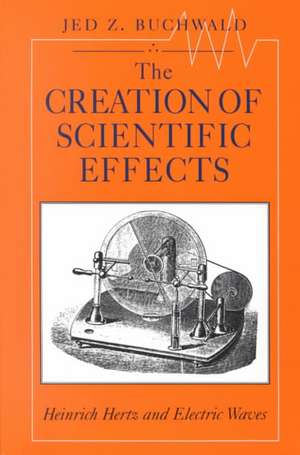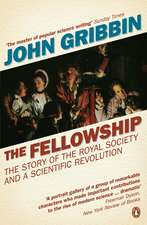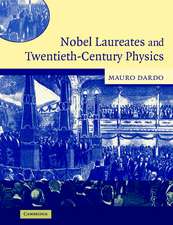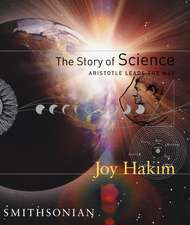The Creation of Scientific Effects: Heinrich Hertz and Electric Waves
Autor Jed Z. Buchwalden Limba Engleză Paperback – 30 iun 1994
This book is an attempt to reconstitute the tacit knowledge—the shared, unwritten assumptions, values, and understandings—that shapes the work of science. Jed Z. Buchwald uses as his focus the social and intellectual world of nineteenth-century German physics.
Drawing on the lab notes, published papers, and unpublished manuscripts of Heinrich Hertz, Buchwald recreates Hertz's 1887 invention of a device that produced electromagnetic waves in wires. The invention itself was serendipitous and the device was quickly transformed, but Hertz's early experiments led to major innovations in electrodynamics. Buchwald explores the difficulty Hertz had in reconciling the theories of other physicists, including Hermann von Helmholtz and James Clerk Maxwell, and he considers the complex and often problematic connections between theory and experiment.
In this first detailed scientific biography of Hertz and his scientific community, Buchwald demonstrates that tacit knowledge can be recovered so that we can begin to identify the unspoken rules that govern scientific practice.
Drawing on the lab notes, published papers, and unpublished manuscripts of Heinrich Hertz, Buchwald recreates Hertz's 1887 invention of a device that produced electromagnetic waves in wires. The invention itself was serendipitous and the device was quickly transformed, but Hertz's early experiments led to major innovations in electrodynamics. Buchwald explores the difficulty Hertz had in reconciling the theories of other physicists, including Hermann von Helmholtz and James Clerk Maxwell, and he considers the complex and often problematic connections between theory and experiment.
In this first detailed scientific biography of Hertz and his scientific community, Buchwald demonstrates that tacit knowledge can be recovered so that we can begin to identify the unspoken rules that govern scientific practice.
Preț: 533.95 lei
Nou
Puncte Express: 801
Preț estimativ în valută:
102.17€ • 111.33$ • 86.09£
102.17€ • 111.33$ • 86.09£
Carte tipărită la comandă
Livrare economică 23 aprilie-07 mai
Preluare comenzi: 021 569.72.76
Specificații
ISBN-13: 9780226078885
ISBN-10: 0226078884
Pagini: 496
Ilustrații: 2 halftones, 83 line drawings, 6 tables
Dimensiuni: 152 x 229 x 33 mm
Greutate: 0.64 kg
Ediția:1
Editura: University of Chicago Press
Colecția University of Chicago Press
ISBN-10: 0226078884
Pagini: 496
Ilustrații: 2 halftones, 83 line drawings, 6 tables
Dimensiuni: 152 x 229 x 33 mm
Greutate: 0.64 kg
Ediția:1
Editura: University of Chicago Press
Colecția University of Chicago Press
Cuprins
List of Figures
List of Tables
Preface
1: Introduction: Heinrich Hertz, Maker of Effects
Pt. 1: In Helmholtz's Laboratory
2: Forms of Electrodynamics
3: Realizing Potentials in the Laboratory
Pt. 2: Information Direct from Nature
4: A Budding Career
5: Devices for Induction
6: Hertz's Early Exploration of Helmholtz's Concepts
Pt. 3: Berlin's Golden Boy
7: Rotating Spheres
8: Elastic Interactions
9: Specific Powers in the Laboratory
10: The Cathode Ray as a Vehicle for Success
Pt. 4: Studying Books
11: Frustration
12: Hertz's Argument
13: Assumption X
Pt. 5: Electric Waves
14: A Novel Device
15: How the Resonator Became an Electric Probe
16: Electric Propagation Produced
17: Electric Waves Manipulated
18: Conclusion: Restraint and Reconstruction
App. 1. Waveguides and Radiators in Maxwellian Electrodynamics
App. 2. Helmholtz's Derivation of the Forces from a Potential
App. 3. Helmholtz's Energy Argument
App. 4. Polarization Currents and Experiment
App. 5. Convection in Helmholtz's Electrodynamics
App. 6. Instability in the Fechner-Weber Theory
App. 7. Hertz's First Use of the General Helmholtz Equations
App. 8. Hertz on the Induction of Polarization by Motion
App. 9. Hertz on Relatively Moving, Charged Conductors
App. 10. Elastic Bodies Pressed Together
App. 11. Evaporation's Theoretical Limits
App. 12. Hertz's Model for Geissler-Tube Discharge
App. 13. Propagation in Helmholtz's Electrodynamics
App. 14. Forces in Hertz's Early Experiments
App. 15. Hertz's Quasi Field Theory for Narrow Cylindrical Wires
App. 16. Considerations regarding the Possible Background to Helmholtz's New Physics
App. 17. Poincare and Bertrand
App. 18. Difficulties with Charge and Polarization
Notes
Bibliography
Index
List of Tables
Preface
1: Introduction: Heinrich Hertz, Maker of Effects
Pt. 1: In Helmholtz's Laboratory
2: Forms of Electrodynamics
3: Realizing Potentials in the Laboratory
Pt. 2: Information Direct from Nature
4: A Budding Career
5: Devices for Induction
6: Hertz's Early Exploration of Helmholtz's Concepts
Pt. 3: Berlin's Golden Boy
7: Rotating Spheres
8: Elastic Interactions
9: Specific Powers in the Laboratory
10: The Cathode Ray as a Vehicle for Success
Pt. 4: Studying Books
11: Frustration
12: Hertz's Argument
13: Assumption X
Pt. 5: Electric Waves
14: A Novel Device
15: How the Resonator Became an Electric Probe
16: Electric Propagation Produced
17: Electric Waves Manipulated
18: Conclusion: Restraint and Reconstruction
App. 1. Waveguides and Radiators in Maxwellian Electrodynamics
App. 2. Helmholtz's Derivation of the Forces from a Potential
App. 3. Helmholtz's Energy Argument
App. 4. Polarization Currents and Experiment
App. 5. Convection in Helmholtz's Electrodynamics
App. 6. Instability in the Fechner-Weber Theory
App. 7. Hertz's First Use of the General Helmholtz Equations
App. 8. Hertz on the Induction of Polarization by Motion
App. 9. Hertz on Relatively Moving, Charged Conductors
App. 10. Elastic Bodies Pressed Together
App. 11. Evaporation's Theoretical Limits
App. 12. Hertz's Model for Geissler-Tube Discharge
App. 13. Propagation in Helmholtz's Electrodynamics
App. 14. Forces in Hertz's Early Experiments
App. 15. Hertz's Quasi Field Theory for Narrow Cylindrical Wires
App. 16. Considerations regarding the Possible Background to Helmholtz's New Physics
App. 17. Poincare and Bertrand
App. 18. Difficulties with Charge and Polarization
Notes
Bibliography
Index















